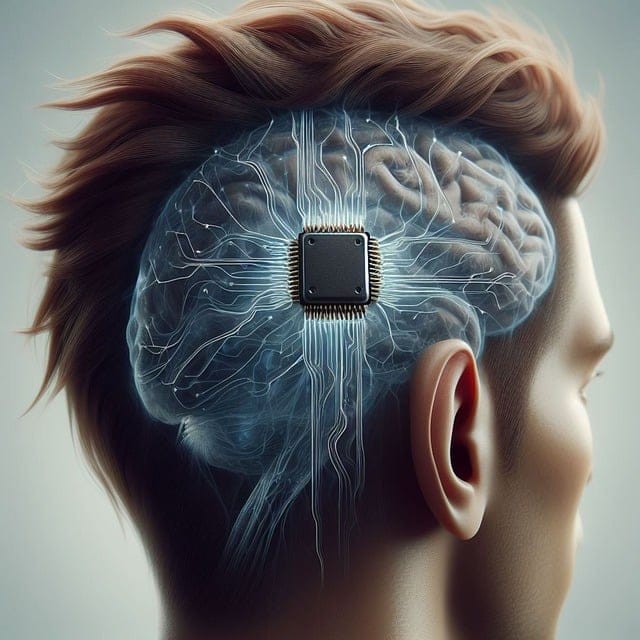In recent years, the concept of brain-machine interfaces has moved from science fiction to the forefront of medical and technological innovation, thanks in part to Elon Musk’s ambitious company, Neuralink. The Neuralink implant is designed to bridge the gap between human brains and computers, aiming to enhance human abilities, treat neurological disorders, and perhaps one day, enable direct communication between humans and machines.
With significant advances underway, this post takes an in-depth look at the Neuralink implant, exploring what it is, how it works, and the potential impacts it could have on our lives. We’ll also cover updates, costs, and the latest developments around this pioneering technology.
Understanding What a Neuralink Implant Is
What Is a Neuralink Implant?
The Neuralink implant is a device developed by Elon Musk’s Neuralink company, designed to connect the human brain directly to computers. This tiny, coin-sized implant sits in the brain and communicates wirelessly with external devices, providing a seamless interface between neurons and digital systems. The implant aims to address a wide array of medical and technological challenges, potentially revolutionizing how we interact with technology and treat brain-related conditions.
How Does the Neuralink Implant Work?
The technology behind the Neuralink implant relies on thin, flexible threads embedded with electrodes, designed to record brain signals and stimulate specific areas. These threads are inserted by a specialized robot that avoids blood vessels to reduce trauma and ensure precision. The implant picks up electrical impulses generated by neurons in the brain, allowing computers to interpret these impulses and respond in real time.
Neuralink Implant’s Impact on Health and Medicine
Potential Health Benefits of Neuralink Implants
Neuralink is exploring how its implants can address neurological conditions such as paralysis, Parkinson’s disease, and epilepsy. By detecting and interpreting brain signals, the Neuralink implant may one day allow patients to control prosthetics, communicate via computers, and perform tasks through sheer mental commands. For patients with spinal cord injuries, Neuralink aims to restore motor function by bypassing damaged nerves.
Neuralink Implant as a Tool for Mental Health
Another promising application of the implant is in the treatment of mental health conditions. Neuralink’s brain-computer interface could potentially alleviate symptoms of depression, anxiety, and PTSD by stimulating brain areas linked to mood regulation. While still experimental, this approach shows promise for creating long-lasting improvements in mental health treatment options.
Technological Aspects of the Neuralink Implant
AI and Machine Learning in Implants
Artificial intelligence (AI) plays a pivotal role in the functionality of the Neuralink implant. AI algorithms interpret data from the brain, converting electrical impulses into recognizable commands. With continuous learning, these algorithms could adapt to individual brain patterns, making Neuralink’s interface more responsive and precise. This adaptation would allow the device to recognize individual preferences and responses, creating a more personalized experience.
Wireless Communication Capabilities of Neuralink Implants
The Neuralink implant operates wirelessly, which is crucial for both convenience and ease of use. This feature eliminates the need for external cables or bulky hardware, allowing users to interact with digital devices seamlessly. The wireless component enables users to operate technology with minimal physical input, creating possibilities for entertainment, productivity, and communication through mental commands alone.
The Cost of a Neuralink Implant
Estimating the Cost of Neuralink Implants
Although Neuralink has not released specific pricing details, initial Neuralink implant costs are expected to be high, given the sophisticated technology and medical expertise involved. Over time, Musk’s vision is to make the implant accessible to the general public, potentially reducing costs through mass production and technological advancements. However, for the foreseeable future, the Neuralink implant price may remain out of reach for most, primarily available for medical or experimental purposes.
Insurance and Accessibility for Neuralink Implant Patients
As the implant moves toward mainstream medical applications, questions arise regarding insurance coverage and accessibility. While experimental treatments are rarely covered by insurance, the implant could become eligible for coverage if it receives regulatory approval and demonstrates medical effectiveness. This development would be essential for patients who could benefit from the technology but lack the financial means to access it.
Ethical and Social Considerations of Neuralink Implants
Ethical Concerns Around the Neuralink Implant
With the advent of technologies like the implant, ethical concerns have surfaced regarding privacy, autonomy, and potential misuse. One primary concern is the privacy of users’ mental data, as these devices access thoughts and neurological responses. Musk and the Neuralink team must address these issues to ensure users’ security and prevent potential misuse, setting industry standards for brain-computer interface ethics.
Social Implications of Neuralink’s Brain Implant Technology
The Neuralink implant could have far-reaching social implications, from altering how we work and communicate to redefining what it means to be human. If the technology becomes widely available, it could create divides between those who have access to cognitive enhancements and those who do not. Society may need to address these disparities and consider how the integration of such technology could impact everything from education and employment to relationships and daily life.
Current Developments and Future Prospects
Latest Updates on Neuralink’s Progress
Neuralink has recently made strides, including implanting devices in animals to test functionality and safety. The first human Neuralink implant trials are anticipated soon, with regulatory approval processes underway. With each new development, Neuralink moves closer to achieving its goal of human trials, which would mark a significant milestone in the journey toward widespread brain-machine interfaces.
The Role of Elon Musk in Neuralink’s Vision
Elon Musk’s role in Neuralink has been instrumental, driving the company’s rapid advancements and ambitious goals. Musk envisions the Neuralink implant not only as a medical device but as a bridge to transhumanism—where human capabilities are augmented by technology. His vision includes a future where humans can merge with AI to keep pace with artificial intelligence advancements and overcome biological limitations.
Potential Challenges Facing Neuralink Implants
Technical Challenges in Neuralink Implant Development
Developing a reliable brain-computer interface poses numerous technical challenges, from ensuring signal accuracy to avoiding interference. The Neuralink implant must achieve stable, long-term functionality within the human brain. Researchers face the task of overcoming hurdles related to signal degradation, device longevity, and power management, as these factors are essential for safe, sustainable brain-machine interfaces.
Addressing Health Risks and Safety Concerns
Implanting a device in the brain involves inherent health risks, including infection, inflammation, and possible long-term effects on brain function. As Neuralink advances toward human trials, ensuring patient safety will be paramount. The implant team will need to conduct extensive testing to minimize risks and reassure potential users of the device’s safety.
The Future of Neuralink Implants and Brain-Computer Interfaces
The Future of Neuralink Implants in Healthcare
Neuralink’s ultimate vision extends beyond basic medical applications. Future implants could provide direct neural stimulation to treat a broad spectrum of conditions, from restoring motor skills in paralyzed individuals to improving cognitive function in patients with degenerative diseases. If successful, this technology could revolutionize healthcare by enabling unprecedented treatments for neurological disorders.
The Role of Neuralink in Brain Augmentation
Looking beyond medical applications, Musk’s vision includes cognitive augmentation for healthy individuals, potentially enhancing memory, focus, and even sensory perception. With further research, the Neuralink implant may allow humans to enhance their mental capabilities in ways we can only imagine today. Such advancements would have profound implications for personal productivity, creativity, and lifelong learning.
Social and Psychological Effects of Neuralink Implants
Impact on Human Behavior and Cognitive Function
The Neuralink implant could significantly impact human cognition and behavior by providing immediate access to digital information. If individuals can control devices with thought alone, the way we learn, work, and interact may change fundamentally. Over time, these shifts could lead to new forms of learning and communication, reducing reliance on traditional methods.
Psychological Effects of Merging Human and Machine Abilities
Integrating technology directly into the human brain raises questions about the psychological impact of enhanced cognition and behavior. Users of the Neuralink implant might experience shifts in self-perception, potentially seeing themselves as “enhanced” humans. Psychologists and sociologists will need to study these effects to understand how brain implants could influence identity, mental health, and interpersonal relationships.
Neuralink’s Potential Role in Shaping the Future
Neuralink and the Concept of a Digital Society
If Neuralink implants become widespread, the world could see a shift toward a fully integrated digital society. Brain-machine interfaces would facilitate real-time data exchange, creating new forms of communication, commerce, and social interaction. This transition to a digitally connected society may change how we experience daily life, transcending current technological limitations.
Challenges of Global Adoption and Regulatory Oversight
For Neuralink to achieve its ambitious goals, the technology must gain acceptance worldwide. This process involves navigating regulatory landscapes across countries, which may vary widely in their approach to brain implants. International cooperation and regulation will be essential to ensuring that Neuralink implants are deployed safely and ethically, especially as they become more accessible and widely used.
Conclusion
The Neuralink implant represents a groundbreaking intersection of neuroscience and digital technology, poised to change how humans interact with machines, manage health, and even enhance cognitive abilities. From treating neurological conditions to enabling direct brain-to-computer communication, Neuralink holds enormous promise. However, with these possibilities come challenges, ranging from technical and ethical concerns to accessibility and global adoption. As Neuralink progresses toward human trials, society must weigh these factors carefully to ensure that the technology benefits all.






